#antient egypt
Text
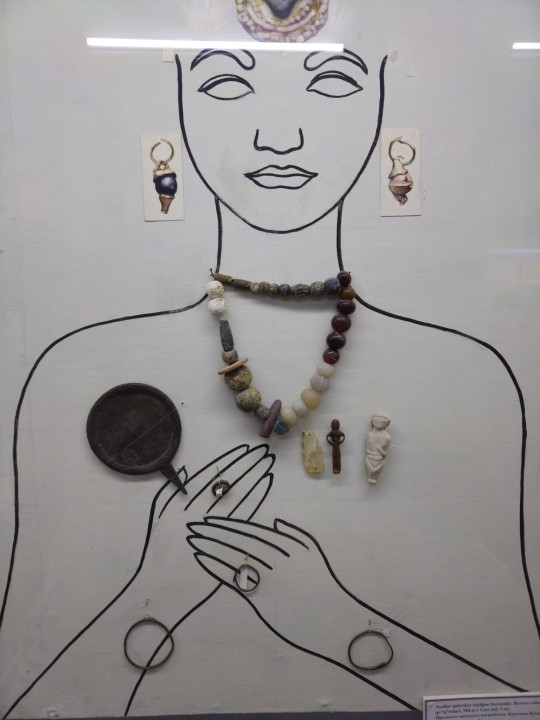

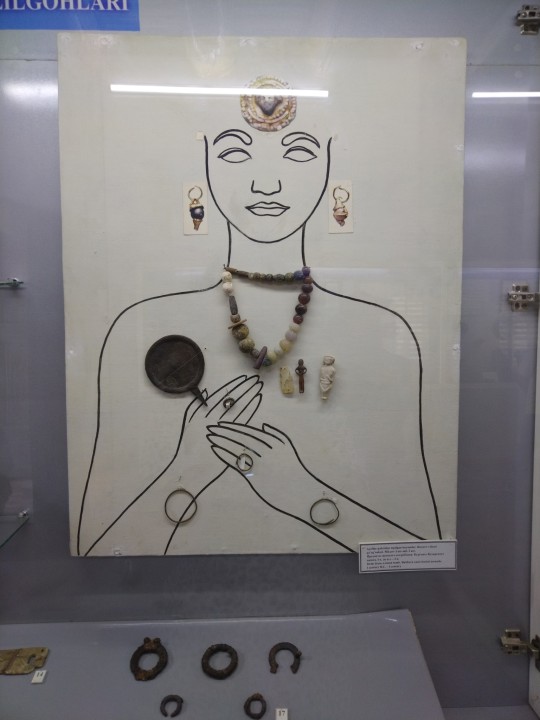
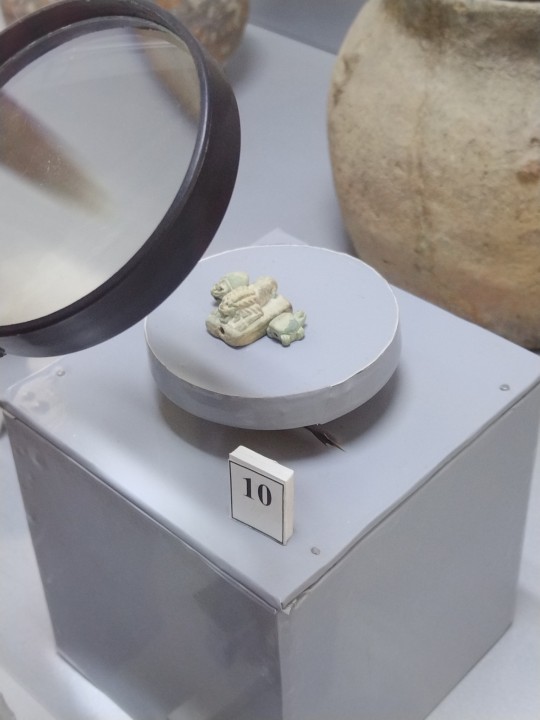
Women jewelry from 1st cent BC - 3rd cent AD. Bukhara, Uzbekistan. Animalistic beads are Egyptian origin.
3 notes
·
View notes
Photo
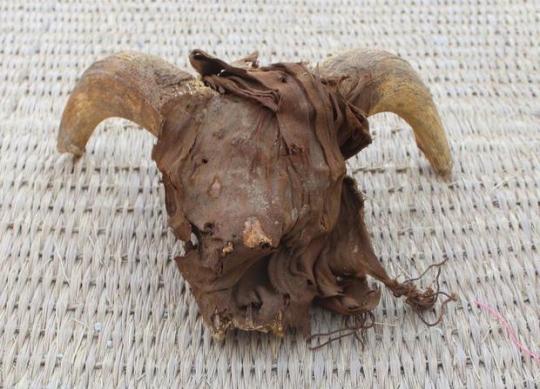
Over 2,000 Ram Skulls Discovered in Egypt's Temple of Ramses II
Cairo — Archaeologists have announced the discovery of more than 2,000 rams' heads at the temple of the ancient Egyptian pharaoh Ramses II — a find that the man in charge of the dig said surprised even veteran Egyptologists and showed the endurance of Ramses' impact, as the skulls were left there a millennium after the pharaoh's rule.
A team of archaeologists with New York University's Institute for the Study of the Ancient World (ISAW) made the discovery in the city of Abydos, one of the oldest cities and richest archaeological sites in Egypt. It's located about seven miles west of the Nile River in Upper Egypt, some 270 miles south of Cairo.
The ram skulls were found stacked in the northern precinct of the temple, said Egypt's Ministry of Tourism and Antiquities, which announced the discovery on Saturday.
"We came across some random pieces of skulls first," Dr. Sameh Iskander, head of the ISAW mission, told CBS News. "We didn't know what they were, but as we continued our excavation and exploration, all of sudden we found a whole area filled with ram skulls."

"These are obviously offerings that were made to the temple of Ramses during the Ptolomaic period, which shows even 1,000 years after Ramses II, that he was still revered." Ramses II ruled over ancient Egypt for about 60 years before his death in 1213 BC.
Iskander explained that some of the ram heads were still mummified, while "others could have been mummified but the wrappings or the covers of mummifications were not there anymore."
The skulls were found among other objects, from papyrus to leather artifacts and statues, about six feet under the contemporary surface of the desert in what had been a storeroom of the ancient temple.
The large number of skulls found in the same place was "surprising even for Egyptologists," Iskander said.

"We are sure they were all dumped at the same time, so this was not an accumulation of skulls that were brought in over the years, but they came from somewhere else and were dumped into this magazine at some point for some reason which we don't know yet," he told CBS News. "It is significant because this place where they ended up is not just any place in the temple, so they were brought there for a reason. They were not just dumped in the desert but were inside this revered domain of the temple."
The archeologists also unearthed a large structure made of mudbricks with walls about 16 feet thick dating back about 4,200 years, to ancient Egypt's Sixth Dynasty.
"It is a major structure that will change our concept of the landscape of Abydos. This wall was built for something, it was at least 30 feet high." Iskander said. "We don't know exactly what this wall is. It's possible that this was a wall of the antient Abydos, which was never found. Could it be something else? Maybe, that's what we are working on now."
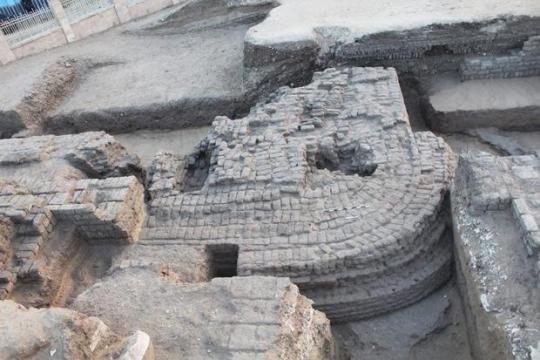
The mission also found other mummified animal remains, including dogs, goats, cows and gazelles.
Beside the massive structure, one very small object also captured Iskandar's attention.
"We also found a small bronze bell in excellent condition with the clapper, so we can hear the same sound of the ancient time. I was very happy to find it," he said. "It was probably used to mark a herd."
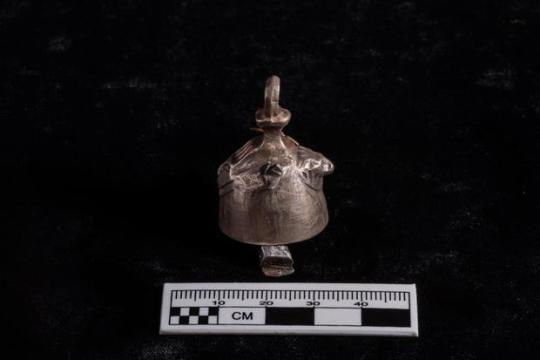
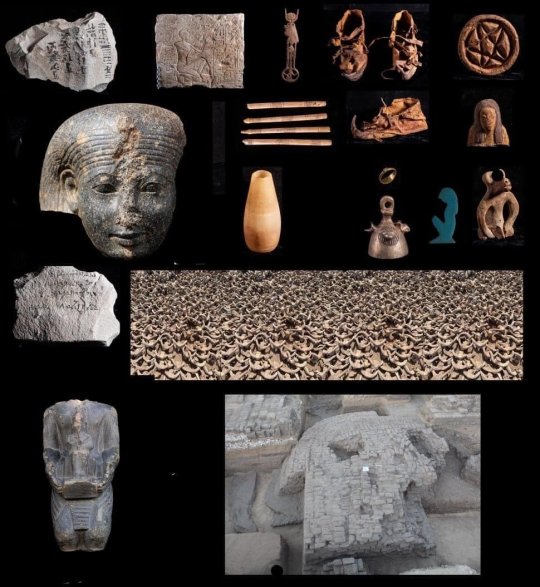
The head of the American mission, whose team has worked at the Abydos site since 2008, spoke to CBS News after traveling back to New York. He said a lot of research was still needed to find explanations for the latest discoveries.
"I hate to keep saying 'we don't know,' but this is the nature of archaeology. We keep working on findings that might lead to something, or not," he said, adding that he and his team may even need to "leave it to the next generation — they may have a better idea or other discoveries."
"Every year we have lots of finds and we come back very happy with the new finds, but we also come back with a huge sack full of questions," he said.
By Ahmed Shawkat.
#Over 2000 Ram Skulls Discovered in Egypt's Temple of Ramses II#city of Abydos#Ptolomaic period#archeology#archeolgst#ancient artifacts#history#history news#ancient history#ancient culture#ancient civilizations#ancient egypt#egyptian history#long reads
174 notes
·
View notes
Note
about cleopatra i just need to clarify two points most fans/people ignore or don't know well enough about ancient egyptiants .. first they are not black they are olive colored skin like lots of mediterraneans .. famous examples like mena mesaud or mo salah or rami malek thats literally egyptians since forever .. just google the drawings on antient temples also they had lots of wars with black africans and their features are clear as sun
second royal egyptians rarely breaded from different races they are like the lannisters in got so 90% cleopatra is totally greek and only ruled egypt like her ancestors at that time
and how netflix is trying to literally blackwash egyptian history is nonsense .. anyone with little history education will know
Nope this is not what we're gonna do. Firstly, did i not literally say this pretty much in my Cleopatra post? Didn't I say she was mostly Greek, and not Black? And secondly, stop with the insistence on "blackwashing." I'll tell you what I told that other person:
There is no such thing as “blackwashing.” This is EXACTLY the type of nonsense I was afraid I’d see when I made this post. MISINFORMED PEOPLE made INCORRECT ASSUMPTIONS and translated those assumptions to screen. Should they know better? Yes. (And perhaps they weren’t even historians in that “documentary” but it’s neither here nor there) But do not use this post to promote your “white history is being blackwashed” agenda. Black people did not ask for this. Don't blame us for what big corporations do. Stop it.
31 notes
·
View notes
Text

The materials, of which I purpose to make use in the following inquiries, are comparatively few, and will be contained within a small compass. They are such as are to be found in the composition of most names, which occur in antient mythology: whether they relate to Deities then reverenced; or to the places, where their worship was introduced. But they appear no where so plainly, as in the names of those places, which were situated in Babylonia and Egypt. From these parts they were, in process of time, transferred to countries far remote; beyond the Ganges eastward, and to the utmost bounds of the Mediterranean west; wherever the sons of Ham under their various denominations either settled or traded. For I have mentioned that this people were great adventurers; and began an extensive commerce in very early times. They got footing in many parts; where they founded cities, which were famous in their day. They likewise erected towers and temples: and upon headlands and promontories they raised pillars for sea-marks to direct them in their perilous expeditions. All these were denominated from circumstances, that had some reference to the religion, which this people professed; and to the ancestors, whence they sprung. The Deity, which they originally worshipped, was the Sun. But they soon conferred his titles upon some of their ancestors: whence arose a mixed worship. They particularly deified the great Patriarch, who was the head of their line; and worshipped him as the fountain of light: making the Sun only an emblem of his influence and power. They called him Bal, and Baal: and there were others of their ancestry joined with him, whom they styled the Baalim. Chus was one of these: and this idolatry began among his sons. In respect then to the names, which this people, in process of time, conferred either upon the Deities they worshipped, or upon the cities, which they founded; we shall find them to be generally made up of some original terms for a basis, such as Ham, Cham, and Chus: or else of the titles, with which those personages were, in process of time, honoured. These were Thoth, Men or Menes, Ab, El, Aur, Ait, Ees or Ish, On, Bel, Cohen, Keren, Ad, Adon, Ob, Oph, Apha, Uch, Melech, Anac, Sar, Sama, Samaïm. We must likewise take notice of those common names, by which places are distinguished, such as Kir, Caer, Kiriath, Carta, Air, Col, Cala, Beth, Ai, Ain, Caph, and Cephas. Lastly are to be inserted the particles Al and Pi; which were in use among the antient Egyptians.
2 notes
·
View notes
Text
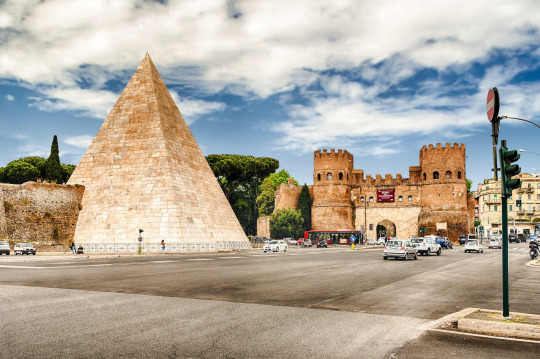
Piramide Cestia or Pyramid of Caius Cestius, tomb, Rome, 18-12 ac.
he Pyramid is located between the Non-Catholic Cemetery and Porta San Paolo. Although reminiscent of the Egyptian pyramids this monument is completely built following Roman construction techniques: material, dimension and structure. In the center there is a single burial chamber.
We need to remember that this pyramid was in antient time outside the city, alongside the streets.
The external epigraph tells us the name of the deceased with a brief biography: "Caius Cestius Epulone, son of Lucius, of the Poblilia tribe, praetor, tribune of the plebs, settemviro in charge of sacred banquets". The hypothesis is that Caius Cestius was a rich merchant who also operated in Asia Minor, or a tax contractor to be able to pay for such monument alone.
The Pyramid of Rome is an Egyptian-style pyramid, the tomb of Caius Cestius. It is a building built of concrete with a marble covering, the white one of Luni, and shows us how vast the impact of Egyptian culture in the Roman world was. Caius Cestius, in particular, impressed by the pyramids in Egypt, decided to have one built specifically, but taking as a model not so much the pyramids of the Giza plain as the Nubian pyramids, slenderer and with a different slope of the corners. In his will Caius Cestius wrote that the pyramid would have to be built in 330 days, otherwise all his inheritance would have been lost; and the heirs were so fast that the pyramid arose even a few days in advance.
We know most of the information related to the construction of the pyramid and the identity of its owner thanks to the rich epigraphic kit of the monument itself. The owner has in fact been identified through the two twin inscriptions engraved on the eastern façade (towards Piazzale Ostiense) and western (towards the Non-Catholic Cemetery) of the tomb:
C(AIUS) CESTIUS, L(UCI) F(ILIUS), POB(LILIA TRIBU) EPULO, PR(AETOR), TR(IBUNUS) PL(EBIS), / VIIVIR EPULONUM: Caius Cestius, son of Lucius, called Epulo of the tribe Poblilia, praetor, tribune of the plebs and settemviro of the college of the Epuloni
The Pyramid of Caius Cestius consists of an imposing nucleus in cement work, inside which the burial chamber was built, bordered by a wall in square work in tuff. At the four corners of the pyramid were arranged as many columns placed on high bases, two of these were relocated to their original position following their discovery during the excavations of 1656.
The structure rests on a travertine foundation and is built in opus caementicium with brick facing, covered with blocks of marble, a precious material used in many monuments of ancient Rome.
The internal cell, covered with a barrel vault, has the dimensions of 4 by 5.85 meters. The walls and the vault of the burial chamber are painted in white, with decorations of the III Pompeian style.
Inside the burial hall it is in fact possible to observe the duct dug to reach it: the tombaroli descended from this opening even sculpting in complete tranquility the real steps to descend more easily inside.
There is no indication of the type of burial of Cestius and the exact place where it was placed. The urn that contained the ashes has never been found, probably stolen during the burglaries already practiced in medieval times by treasure seekers.
#rome#pyramid#pyramid of rome#piramide cestia#art history#art academia#dark academia#art#light academia#romans#tombs#tombstone#ancient egypt#chaotic academia#academia#classic academia#classical academia#chaotic academic aesthetic#architecture#ancient history#ancient rome#roman empire#archaeology#roman history
2 notes
·
View notes
Text


Ginger: "So next thing, we're gonna do is homework. I have to learn history. Like, really stupid old things no one even cares about. Well, except for this part. Did you know that in Antient Egypt cats like you where worshipped? You would have been a goddess!"
#Violet#Ginger Baccha#Gen 5: Plum#Gen 6: Orange#drs nsb#nsb#nsb challenge#not so berry#not so berry challenge#the sims#the sims 4#Simblr
1 note
·
View note
Text
Cats
Day 12 of the 30-days short story challenge
Today's topic is cats. Do you remember my Anders Johnson x Fem!Hades fanfic made for the #Deanobingo2023 hosted by @deanobingo?? Well, I decided to take a peek at Anubis' cats.
CW: different takes on actual and antient religions. Words: 1037
Here it goes:
Anubis had been a growing god since the beginning of times. He started his existence as the protector of graves, embalmer, and guide to the netherworld. Among humans, however, Osiris gained popularity just because he resurrected, Osiris took Anubis's job as lord of the netherworld, god of life, the dead, and the afterlife. That rubbed on Anubis the wrong way, especially since there was nothing he could do because Osiris was one of the most popular gods among Egyptians.
Tables turned when Egyptian religion declined. Monotheism took place and all the false dogma spread like a plague. Just as the Ancient Greek gods had done, the Egyptian ones left the human realm abandoning them without looking back. Osiris was expected to remain in the netherworld and attend to his duties, however, humans didn't respect him anymore which plied up with the notion that he felt the netherworld suffocating. Anubis, who had never dreamt of taking his rightful place once again, suggested to Osiris that it would be good for him to get some fresh air from the gods' realm. Sooner than expected Osiris sent Anubis a missive informing him that he refused to go back and that all his duties were now Anubis'.
Luckily Anubis had left his jackal body behind because if his tail was still in place it would have waged with renewed energy; just the notion was mortifying.
As time went by, his relations with other Mediterranean gods became stronger. In the end, they all had the same issue: humans didn't believe in them anymore which made most of the gods leave the mortal realm leaving behind the gods of the dead and the afterlife to take care of the poor mortal souls that piled up in their thresholds. The holy wars were a nasty business for them. Fighting for a non-exiting almighty god, humans had killed and gotten killed, and now their souls found themselves lost as they all expected to be gathered into some sort of Heaven.
One rule that one has to take into account is that, wherever one dies, one's soul belongs to the local god. Only Hades and Anubis kept working as gods of the dead, thus they divided the Mediterranean area between them. They both worked hand in hand to take care of all the holy wars' souls which wasn't a piece of cake; the fact that both sides found themselves sharing the exact same queue to have their souls weighed or tested was a big shock for them.
Nasty thing monotheism. And to think that the whole thing started just because Loki was sent to Earth and was getting bored…
Hades did something unprecedented at some point. She packed her things needing a change and, of course, to seize Loki and make him pay for all the paperwork he provoked them to do. Apparently, the northern gods had had to run away due to the ferocity of monotheism in those lands; they set themselves in New Zealand, blending their souls into human vessels to regenerate every human life until Odin completed a quest that would take them all to Asgard.
Despite the fact that Hades had changed her realm for New Zealand, she kept doing her work efficiently, and so did Anubis. However, more times than necessary, he found himself looking through the veil to the human realm. After Hades made up her mind and decided to stay in New Zealand as long as her new partner was mortal Anubis knew the human realm was his only chance to keep his sanity.
Copying Hades' actions, Anubis changed his godly appearance in favor of more human traces. He became a tall man with wide shoulders and firm muscles, black eyes, and strong black hair modernly styled in perfect harmony with a well-kept puffy beard. Not only that, he also copied Hades inserting himself in the law business in Egypt. In the end, as gods of the dead, they seemed to gain pleasure in applying laws and doing paperwork —to some extent, of course.
Hence his current position eying some of the latest paperwork Hades had sent him, written in ancient Greek, in his very luxurious law firm.
Silently, Mummy jumped on his desk blinking at him once he looked at her. The white cat was sensing his distress. Leaving his stylus aside, Anubis pulled away from the desk taking a deep breath. Mummy moved carefully on top of his documents before letting herself drop into his lap. She stretched herself before hitting Anubis' chin with her head while purring. The god surrounded the cat with his big arms and walked with her against his chest making a beeline to the Chesterfield sofa that was awaiting him for a moment of relaxation. As he launched at it, Mummy left out a little meow before resuming her work.
Implementing the use of cats as emotional-support pets instead of just guards of the dead was a very good idea. Anubis and Hades were drinking their miseries away several centuries ago when they came to the conclusion that their souls were terrified of both, Greek three-headed dogs and furless cats. They trained their animals to be soul keepers for millennia, but a change was needed thus they started the new training with the new litters.
Hades had accomplished a great deal by allowing her three-headed dogs to transform into cute normal dogs, especially golden retrievers. Her souls felt more at ease when the emotional support beast was cute and ready to cuddle.
Anubis did the same, only with the difficulty that cats were more independent than dogs yet they needed more attention somehow. Only a cat wasn't enough to keep his stressed souls happy, he had to lend his cats in pairs.
There was also the issue of those people in his realm who didn't like cats. Anubis and Hades signed a collaboration treat in which they were going to share cats and dogs when necessary. There has not been a problem since.
Flail jumped into his stomach claiming her own time smoothing Anubis' emotions. Mummy allowed her sister a spot reluctantly leaving Anubis with no other choice but to scratch each cat with one of his hands, the paperwork could wait.
The end.
#fanfic#30 days short stories#30 days#short stories#writing challenge#writing prompt#prompts#cat#anubis
0 notes
Text
Character Design
I think a game franchise that designs characters really well is Assassins Creed. Each assassins creed game really captures the time period that the game is set in. A few examples that show these are the most recent games (Valhalla, Odyssey & Origins) in the franchise that I think execute their character designs perfectly. In my opinion, I do think that the best designs are the Odyssey ones, but that might just be because I like the times of Sparta.
Eivor - AC: Valhalla

Ragnar Lothbrok - Vikings

Alexios - AC: Odyssey

Spartan Armour

AC: Origins
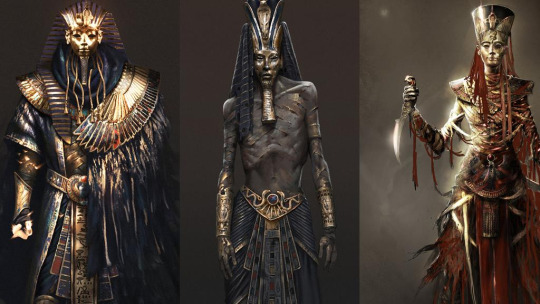
Antient Egypt

0 notes
Text
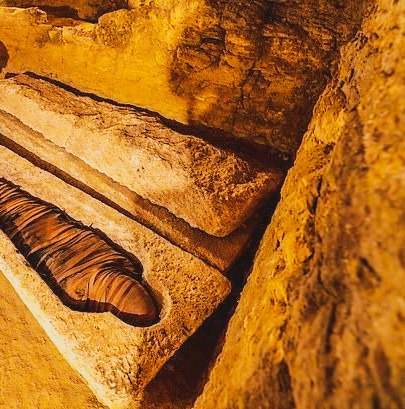
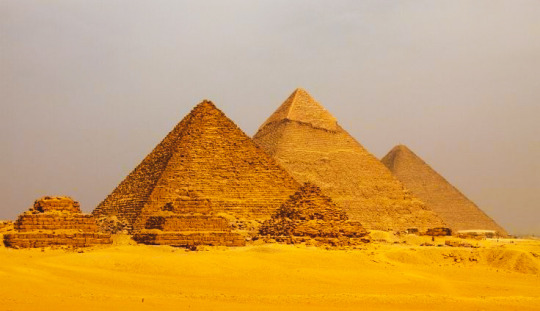
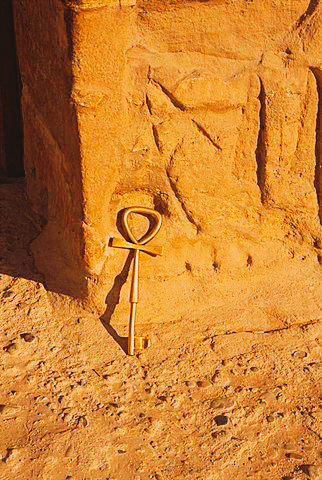
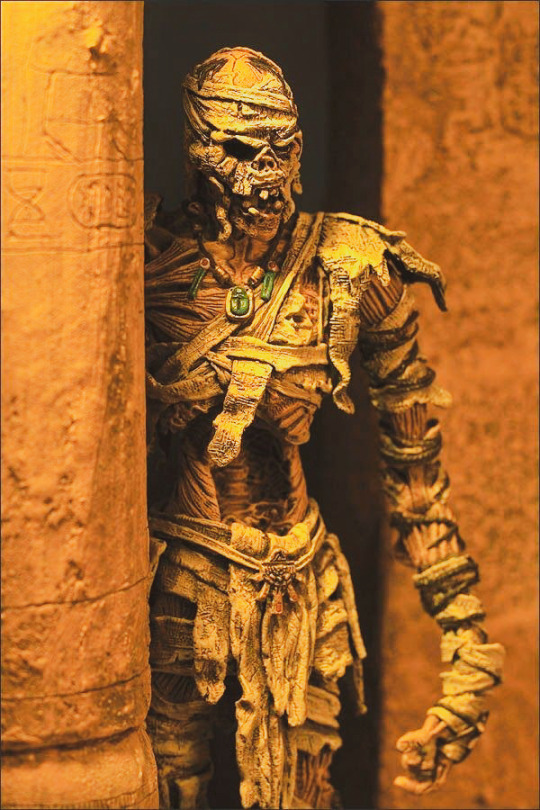



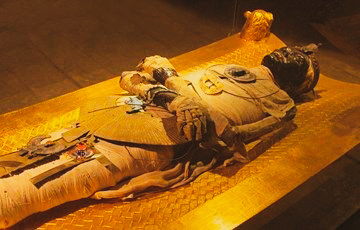
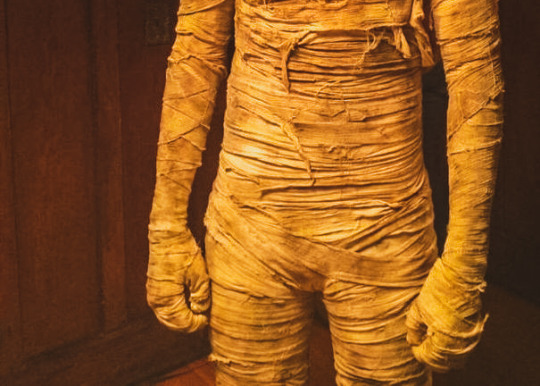
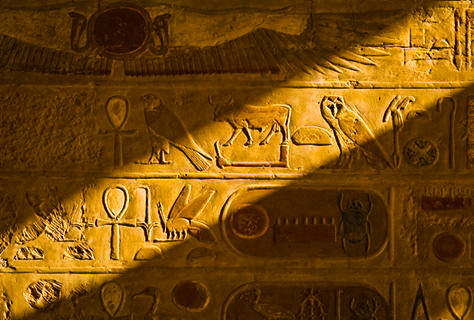
halloween creature series ~ mummy
(witch | vampire | werewolf | monster | ghost | zombie)
#mummy#mummy aesthetic#all hallows eve#halloween#halloween aesthetic#creature#creatures#creepy#egypt#ancient egypt#antient egyptian#magic#book of the dead#aesthetic#aesthetics#forzeaesthetique#monster#monsters#dead#death#heiroglyphs#heiroglyphics#sarcophagus#pyramid#great pyramid of giza
83 notes
·
View notes
Text
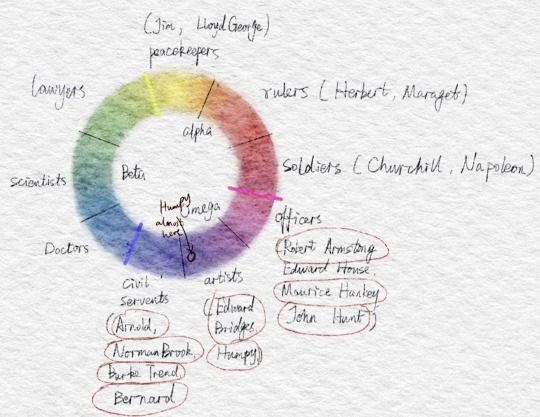
Sth about my ABO AU:
The Six-gender category is traditional western idea, and in 1900s, a new theory was shown that gender cannot decide characteristics. This colorful ring is the most popular gender theory nowadays.
Actually, in antient China, people were divided into 4 kinds and the royal familys. Because Chinese believed TaiChi and yin and yang can change to the other, the problems were more complicated.

(Four genders in ancient China, Japan and Korea)
There might be some different categories in Egypt, India, Africa, Maya, etc.
5 notes
·
View notes
Link
by Adrian T. Taylor, Ph.D.
Founding Member of the David A. McWilliams, Sr. Research & Education Lodge
F&AM, PHA DC
Introduction
In the text “Accosting the African Origins of Freemasonry, and Beyond,”[1] this researcher took up the problem of the African/Egyptian origins of Freemasonry. In the latter text, a representative argument was reviewed, as portrayed by Lanier A. Watkins.[2] In Bro. Watkin’s text, a variety of figures peculiar to members of the Craft were displayed, juxtaposed to similar figures found in ancient Egypt, as we can see in Figure 1.
Figure 1: Images Peculiar to Freemasons[3]
Upon displaying similar figures, it was then contended by Bro. Watkins that “with sufficient evidence it is sensible to suggest that many of the signs used in our modern craft may have their origin in [a] much older African Culture.”[4] Assessing the latter text, this researcher argued that “sufficient evidence” had been crafted to simply “suggest” that Freemasonry “may” have an African origin, given that anyone can effectively suggest anything, no matter a suggestion’s truth-value. Conversely, this researcher argued that “sufficient evidence” had not been crafted, on the latter grounds, for there to be a definitive/clear African Origins of Freemasonry, beyond a simple suggestion.
Essentially, this researcher argued that Bro. Watkin’s “suggestion” was too permissive, though consequential. Later, this researcher created a framework for what can count as “sufficient evidence,” to responsibly examine the question: Is there an African Origin of Freemasonry? Consequently, this researcher constructed Three Stations that needed to be circumambulated, that of (1) The Secret History Station, (2) The Generation of the Ritual Station, and (3) The Egyptian Meaning Station.
In this paper “The Generation of the Ritual Station” will be reviewed. It will be reviewed focused on tracing the generation of the third degree, in light of the purported similarities between the Legend of Hiram Abiff and the Legend of the Egyptian deity Osiris,[5] as originally portrayed by the Greek, Plutarch (46 – 120 C.E.).[6]
The Generation of the Ritual Station
Ritual and ceremony are nothing new to Freemasonry and society at large. Ritual and ceremony attempt to buttress and communicate shared values and experiences, over time. In the Craft, allusions to ritual and ceremony can be traced to the oldest Freemasonic document of record, the Regius Manuscript/poem. It was written circa 1390 C.E. and is sometimes referred to as the Halliwell manuscript, grouped with the Gothic Constitutions, which traces Freemasonry’s legendary/mythic origins to ancient Egypt.[7] In society, ritual and ceremony are seemingly ubiquitous, ranging from the profane (putting on your Washington Redskins jersey before the big game against the Dallas Cowboys) to the profound (listening to the bride and groom at a wedding ceremony, pledge: “until death do us part!”).
Nonetheless, Freemasonry is distinguished by its “secret” initiatory ritual ceremonies which progress by degrees of instruction. Traditionally, secrets were kept for proprietary reasons (as vital trade secretes) by the operative stonemasons of Gothic Cathedrals and were communicated orally because much of Europe at that time was illiterate. Effectively, said ritual ceremonies have been participatory, morality plays, attempting to communicate the core values (e.g. faith, hope and charity) and virtues (e.g. brotherly love, relief and truth) of the Craft.
It is here, in the space of ritual and ceremony, where the problem of the African Origins of Freemasonry arises, particularly focused on the generation of the third degree. Some essentially see the Legend of Osiris dramatically reworked in the finished Legend of Hiram Abiff.[8] To move beyond a simple suggestion on the African Origins of Freemasonry, towards a negotiation of “sufficient evidence,” we need to (1) trace the genealogy of the third degree, and (2) pay particular attention to the dispensation of Dr. John Theophilus Desaguliers, who according to Dr. David Harris, a Mason, was the key generator of the third degree ritual.[9]
The Genealogy of the Third Degree
When we assess the earliest, operative stonemason records of the Craft, we essentially find a rather straightforward singular ritual and ceremony. When a man was made a Mason, after, in some instances, at least seven years of apprenticeship, he was read a legendary history of the craft. Additionally, he was instructed to take an oath of fidelity, with his hands placed on the Bible, before he was recognized as a Fellow of the Craft or an operative Journeyman (both terms denoting a full Mason).
Based on the available evidence, we find that over time the ceremonies became more elaborate, and two degrees emerged.[10] Rooted in British culture and custom, we can find the construction of instructive questions and answers to be committed to memory, new modes of recognition, the creation of terrible pledges of trustworthiness, the communication of various lectures informed by the Bible, and the creation of various symbolic rites.
As the Craft began to change from an operative labor guild (of stone builders) into a speculative society (of moral-character builders), the ceremonies and symbolism began to change. This gradual change was informed by the decline in palace and cathedral constructing. It was also a reflection of the renegotiation between faith, reason and the State, rooted in the Renaissance and the Scottish Enlightenment.[11] These changes were eventually reflected in the second degree. In time, more non-operative masons were freely “accepted” as members and began to replace/dominate the old stonemason guilds. According to most accounts, Elias Ashmole (hermeticist, alchemist and founding member of the Royal Society) is the first Free and Accepted “speculative” (or philosophical) Mason. In his diary, Ashmole recorded his “acceptance” into the Craft in 1646, at a tavern in Warrington, England.[12]
Eventually, the Craft changed from a two degree system in 1717 (the first degree was for Entered Apprentices and the second degree was for Masters or Fellows of the Craft) to a three degree system, securely established by 1730 (the Entered Apprentice, and the Fellow Craftdegrees, with the addition of a third degree, for the Master Mason). The latter transition from a two degree to a three degree system has been traced by recognizing that the Premier Grand Lodge of England only worked two degrees in 1717. This can also be traced by tracking “Two early manuscripts of 1711 and 1726 (Trinity College, Dublin MS. and Graham MS.), an expose of 1723 (A Mason’s Examination), and two minutes of 1725,” indicating that a third degree was being worked. Further, it was clearly established that three degrees were in use with the introduction of the bestselling expose of 1730, Samuel Prichard’s Masonry Dissected.[13]
According to Dr. Harrison, “The changes in ritual, the reorganization, and the centralisation [sic] that would be administered as a result of the new Grand Lodge eventually resulted in rebellion, most notably in York and with the creation of the rival ‘Antients’ [sic] in 1751,” only to be harmonized at the Union of 1813, as the United Grand Lodge of England.[14]
Within this milieu, there are credible reports that one of the earliest depictions of the third degree was “performed as a play by an all-Masonic cast at the Philo Musicae et Architecturae Societas Apollini (Apollonian Society for Lovers of Music and Architecture) in London.” In this original play, we find that “it dramatically told two stories: the building of King Solomon’s Temple and the death of Noah, and with his death, the loss of his ‘secret knowledge.’”[15] In a later edition of Dr. James Anderson’s Constitutions of 1738 we find that a “Noachidae was the first name of the Masons, according to some old tradition” meaning “sons of Noah.”[16] For Anderson, his legendary conception of Noah was consequential insofar as Noah “was commanded and directed of God to build the great Ark” and that he and “his three Sons, JAPHET, SHEM, and HAM, all Masons true, brought with them over the Flood the [Masonic] Traditions and Arts of the Ante-deluvians.”[17] This ongoing transition helped to facilitate the consummation of what we now know as Blue Lodge Freemasonry.
When the third degree ritual took its final form, in light of the contemporary debate about the nature of its origins,[18] we know that the new ceremony featured a legend about a Grand Master Mason Hiram Abiff, a widow’s son—replacing, but combining many of the original elements from the Masonic legend of Noah. Assessing the accepted legend, we essentially find a narrative featuring Grand Masters, King Solomon of Israel, King Hiram of Tyre, and Hiram Abiff, focused on the building of Solomon’s Temple in Jerusalem. According to one amended account, from the Masonic Scholar Brent Morris,
King Solomon organized the works by skill for work efficiency. King Hiram furnished building supplies and workers for the Temple. Hiram Abiff was the master builder, responsible for all of the decorations of the Temple… Three Fellowcraft Masons were impatient to receive the Master Mason word, and tried to extort it from Hiram Abiff. He refused to reveal the secret and was murdered. The murderers hastily buried the body of Hiram outside the city and tried to escape. They were captured, returned to Solomon for judgment, and punished. The body of Hiram was found and reburied in a more dignified grave.[19]
The allegorical meaning and/or allusions of the above mentioned legend are going to vary depending on the contingencies of a given evaluator.[20] Yet, if we take the recent work of Dr. Harris seriously, focused on the dispensation of Dr. John Theophilus Desaguliers, [21] we may be able to more responsibly ascertain what influenced the generation of the third degree—the degree where some contend that the Legends of Noah and Hiram Abiff were inspired by the Legend of Osiris.
The Dispensation of Dr. John Theophilus Desaguliers
According to Dr. David Harrison, in the text Genesis of Freemasonry, “most historians have neglected … the importance of the ritual, which was central to the history of Freemasonry and held the true meaning of the Craft.”[22] Beyond any notions about what “the true meaning of the Craft” truly is, given the challenges of circumscribing symbolic speculations, his review of the dispensation of Dr. Theophilus Desaguliers, focused on the generation of the third degree is instructive. Assessing the work of Harrison, we clearly find that Desaguliers was “influenced by various sources.”[23]
As has already been reviewed in this text, the ritual ceremonies of Freemasonry have emerged over time. Based on the documented evidence, the Craft first had one, two, and then three degrees of instruction—along with the proliferation of degrees in our times. More importantly, we can say that the latter degrees mirrored the social/political worlds in which they emerged, culminating in the transformative nature of the third degree.
In the social world of early to mid 18th century Britain, we can find a renegotiation between what can be framed as Classical and Modern traditions. This is reflected, in part, by the Classical traditions of the Bible, Stonemasons Guilds, and Esoterica (magic, alchemy, and hermeticism); and, in part, by the Early to Modern traditions of the Renaissance and the Scottish Enlightenment (rooted in Esoteric speculations, Reason and Science).[24] As such, the Classical and Modern traditions, in conflict with each other during the dispensation of Early to Modern Europe, and even in our times, found a place to lodge, symbolically in Solomon’s Temple. Assessing the historical record, (Rev. Dr. James) Anderson and (Rev. Dr. John Theophilus) Desaguliers (both members of the Royal Society) are credited with transforming the latter conflict, playing significant roles in getting this work done through the creation of the Book of Constitutions (1723) and the generation of the third degree (1720s), respectively. Accordingly, the historical record demonstrates that “Desaguliers, with the assistance of Anderson, reconstructed the ritual with dramatic and theatrical flare.”[25]
Further, we find that codifying third degree “ritual changes date to the early 1720s, and occur after Desaguliers visited the Lodge of Edinburgh that met at St. Mary’s Chapel.” A growing consensus of historians are contending that “elements of what was to become the Third Degree ritual were designed during this period, the changes perhaps being influenced by what Desaguliers had witnessed in the lodge in Scotland” and his collection of “Old Charges” and/or “Curious Writings.”[26]
Little is known about the life of Desaguliers. In 1683, Desaguliers was born in France – during a time of political tumult and religious intolerance. Eventually, his family fled to England. It is reported that in the early 1700s he attended Oxford University, became a member, and eventual curator, of the Royal Society,[27] and “quickly penetrated [Sir. Isaac] Newton’s circle” of natural philosophers (denoting early scientists).[28] As such, we find that Desaguliers established a significant relationship with Newton, accepted as the keystone of the scientific revolution.[29] Newton was also recognized as an Esotericist in his times given his translation of The Emerald Tablet of Hermes Trismegistus, and his “obsession” with measuring and discovering the “occult” mysteries of Solomon’s Temple. It is also reported that Newton became the godfather of one of Desaguliers’ children, and that Desaguliers’ “experiments even influenced some of Newton’s own ideas, such as the transmission of heat through a vacuum.”[30]
As well as being an early scientist, Desaguliers became a Reverend (and Huguenot minister) with the Church of England. In his own life, eventually embodied in the confluence of influences on the generation of the third degree, we see that Nature’s God can be ascertained through Faith and Reason. Faith and Reason were not mutually excluded; they were essentially two different epistemologies that could be valued to secure more light. Moreover, records indicate that he was at the founding of the Premier Grand Lodge of 1717. In 1719, he was the Grand Master of the Premier Grand Lodge, a position that surely solidified his place and respect in the Craft, informing the authority that he was granted to re-work the third degree. Before he died, apparently with little pomp and ceremony in 1744, it is reported that he served as Deputy Grand Master more than once.
Focused on Desaguliers’ dispensation, and the factors that contributed to the actual generation of the third degree, we find the renegotiation between the past and his working present. By this, we are referencing the dispensation of Desaguliers and his attempt to synthesize the Classical and Modern traditions, embodied within the third degree.
The Classical and Modern Traditions
There were a variety of streams at work during the dispensation of Desaguliers’ third degree work. One was the Classical Tradition, informed, in part, by the Bible, Stonemasons Guilds, and Esoterica (magic, hermeticism and alchemy). The other was the Modern Tradition, informed, in part, by all that came before it, and the light of the Renaissance and the Scottish Enlightenment.
Assessing the earliest records of the Modern Craft, Freemasonry’s Judeo-Christian foundations are clear.[31] During the dispensation of Desaguliers, Protestant England was still in flux, religiously and politically. England was still recovering from the political and religious turmoil-warfare that followed from Henry the VIII’s decision to separate from the Church of Rome two centuries earlier. Within this space, Freemasons wanted to establish harmony. According to Masonic scholar Mark A. Tabbert, they “sought to avoid theological and political differences by subscribing to a viewpoint that supported a universal affirmation of man’s dependence on God, the existence of an afterlife, and the wisdom conveyed through Holy Scripture and evident in the designs of nature.” Henceforth, Masons pledged to support “that religion in which all men agree,” essentially Christianity, given the dispensation of which this passage emerged, “leaving their particular opinions to themselves.” Thus, Freemasonry is often framed as “a brotherhood of man under the Fatherhood of God.”[32]
As has been reviewed, Freemasonry pulls from the operative Stonemasons Guilds of Medieval Europe. Assessing the nature and organization of the latter guilds, the literature suggests that they were “comprised of ‘laborers,’ who wrought the stone; ‘foremen,’ who supervised the work, and ‘architects,’ who were the master overseers.” These “Guilds oversaw a craftsman’s progress from apprentice to master, maintained the quality and ownership of the craft, and provided assistance to the brothers in time of need.” Further, “A stonemason’s ‘lodge’ was located at the site and was the place where mason gathered, received instruction and stored their tools.”[33]
Historicizing the religious tolerance and respect for the State that we often find in the Craft, it becomes clear that it is rooted in the operative past. On the one hand, stonemasons built cathedrals for the Church, and on the other hand they built castles for the King. To maintain harmony, and regulate the order, the accepted history of the Craft suggests that stonemasons “drew up long lists of rules or ‘charges;’ that articulated their mythical history, established their local authority, and required the members to be faithful Christians and loyal subjects to the king.” To keep trade secrets and acknowledge rank, “hand signs and grips” were contrived, which allowed senior craftsmen to travel to “distant job sites.”[34] As times and historical conditions changed, so too did the craft from an operative system to a speculative system, appealing to the metaphors of architecture.
During the dispensation of Desaguliers, an Esoteric tradition of magic, hermeticism and alchemy was also at work. Often, Esoteric matters are synonymous with the occult or “sinister” issues of deliberately hidden/veiled secrets. Allegations of “black” magic and the Craft are old. Confronting the reality that “Freemasonry is referred to as the Craft suggests” for Harrison, “a direct link to the craft guilds of the medieval period, yet elements of the ritual and the symbolism also hint at connections with the occult and particularly with witchcraft.”[35] During Freemasonry’s formative years, allegations of “black” magic were addressed by James Anderson (Book of Constitutions, 1738) and Laurence Dermott (Ahiman Rezon, 1778). Anderson dealt with the allegation that Masons raised “the Devil in a Circle,” and Dermott recognized that “free masons were supposed to have a power to raise the Devil,” such that people were “forbid by the clergy to use the black art.”[36]
Beyond said allegations, the work of Harrison displays some more than curious connections with the Craft and magic. For Harrison, there are connections between the following: “The ‘casting’ or ‘drawing’ of circles” used in early rituals; “the use of candles within the ritual, lit at the opening and blown out at the close of the lodge,” is thought to be “reminiscent of magic ceremonies, assisting in developing the atmosphere of the lodge room already charged with ambience created by the display of powerful symbolism and poetical ritual;” the reality that early lodges “met once a month during the time of the full moon,” like the ancient Druids; there are suspicious links recorded in 1586 of “Noah’s son Ham being linked to the black arts,” connected “to a gruesome story of necromancy;” and the prevalence of numerology, associated with “Masonic magical numbers, such as three, five, seven and 15.”[37]
The search for “lost knowledge” was also on offer during the dispensation of Desaguliers. This theme was captured in the practices of hermeticism and alchemy, both tracing their roots to ancient Egypt. Those that were disposed to the latter practices were persecuted as magicians, as such, by the Catholic Church, tortured and burned at the stake, alongside the philosophers and scientists.[38]
Beyond Desaguliers, the emergence of speculative Freemasonry is fundamentally connected to esoteric matters (i.e. hermeticism and alchemy) as portrayed by the interests of Elias Ashmole (the first Free and Accepted Mason of record). He is cited for his translation of The Hermetic Arcanum (or The secret work of the hermetic philosophy), and his defense of the Rosicrucians in the text Theatrum Chemicum Brittannicum. According to Harrison and other sources, we find that “he was an avid student of the occult, experimenting in many forms of what was termed magic, and rigorously researched number mysticism, alchemy and astrology.” Additionally, he was “involved in the Hermetic Arts, learning Hebrew in an attempt to further his studies in his search for lost knowledge.” Preceding Desaguliers, we find a foundational negotiation between the Classical and Modern traditions, given that it was Ashomle’s “study of the Old Science of alchemy and astrology, which inspired him to be a founding member of the Royal Society, which in turn would be a bastion for the New Science.”[39]
During the dispensation of Desaguliers, Egypt was the eternal, attractive enigma, especially for Esotericists.[40] Egypt was thought to be “the fount of all wisdom and the stronghold of hermetic lore.”[41] However, the dispensation of Desaguliers was not unique. The fascination with Egypt started with the Greeks; was constitutive of the legendary founding of the Craft as portrayed by the Gothic Constitutions;[42] and continues to this very day.[43] People during the dispensation of Desaguliers learned about Egypt through existent texts/translations of the Greeks, and others, which informed hermeticism and alchemy (and its “imagined” institutional perpetuation via the Rosicrucians).
Though the hieroglyphs were not deciphered until 1822 by Jean-Francois Champollion, Egypt was not a complete enigma. Renaissance and Enlightenment Europe learned about Egypt through the works of Herodotus, Plato, Plutarch, Strabo, Diodorus, Iamblichus, Clement of Alexandra, Horapollo, Apuleius, and others; and texts like the tractate Asclepius, the Corpus Hermeticum, the Tabula Smaragdina, and the Rosicrucian text Fama Fraternitatis (The Rosicrucian Manuscripts). The latter texts kept the image of Egypt alive for the dispensation of Desaguliers, rooted in the mythos of hermeticism and alchemy.[44]
The patron of Hermeticism is fictitious. Hermes never existed in his many purported guises. In the foundational text The Secret History of Hermes Trismegistus: Hermeticism from Ancient to Modern Times, written by Egyptologist Florian Ebeling, we find that “The figure of this legendary Egyptian sage arose from the merging of two deities of highly divergent origin: the Egyptian god Thoth and the Greek God Hermes.”[45]
For the Egyptians, Thoth (who the Egyptians called Tehuti) was mysteriously born in some accounts from the semen of the deities Horus and Set, containing within his being two warring elements. Thoth was typically symbolized by an ibis, a baboon, the head of an ibis on the body of a man, or as a human sage.[46]
Figure 2: Image of Thoth[47]
Thoth had many characteristics. In different dispensations, he was known as the deity of wisdom, inventor of writing/hieroglyphs, generator of sacred literature, superintendent of justice, inventor of the calendar, author of measurement, measurer of time, generator of rituals and sacred offerings, and inventor/practitioner of magic.[48] In Egypt’s Hellenized (or Grecian) period (circa 332 B.C.E to 30 C.E.), his magical and/or “mysterious” elements became privileged, focused on easing one’s passage to the netherworld, such that it even became inappropriate to even speak his name.[49]
After Alexander of Macedonia conquered Egypt in 332 B.C.E., Thoth became Hermes Trismegistus (thrice great), first portrayed by Akhmim in 240 C.E., though referred to as “twice great” around 570 B.C.E.[50]
Figure 3: Image of Hermes Trismegistus[51]
For the Greeks, Hermes was originally the “helpful messenger of the gods,” according to Ebeling. He had many attributes, from the god of community to the god of oratory. Similar to Thoth, “he conducted the souls of the dead in the netherworld… out of the shadowy realm and into the world above.”[52] When he was merged with Thoth, he took on a new legend and attributes. He became the deity “of all wisdom, philosophy, and theology,” even teaching philosophy to the Greeks under his pseudepigrapha.[53] He also became the deity of the “Egyptian Mysteries,” though there are grounds for a “hermetic lore” being rooted in Egypt.[54]
Typically when people talk of the “Egyptian Mysteries,” they are appealing to notions of Egyptian secrets, sacred ritual, and ceremony—all attributed to Thoth. This brings us to “The Legend of Osiris,” and attendant ritual, ceremony and “mystery.”
Figure 4: Image of Horus (left), Osiris (center), and Isis/Hathor (right)[55]
Assessing the nature of the legend, we find the following amended account by the British Museum:
Osiris was the king of the earth and Isis was the queen. Osiris was a good king, and he ruled over the earth for many years. However, everything was not well. Seth [or Set/Typhon] was jealous of Osiris because he wanted to be the ruler of the earth. He grew angrier and angrier until one day he killed Osiris. Osiris went down into the underworld and Seth remained on earth and became king. Osiris and Isis had one son called Horus. Horus battled against Seth and regained the throne. After that, Horus was the king of the earth and Osiris was the king of the underworld.[56]
Ironically, at least during the Hellenized period of Egypt, if there were any secrets, they were out. The Legend of Osiris was public knowledge. As such, the “Egyptian Mysteries” were not so mysterious/secret. It was dramatically/symbolically depicted by Plutarch circa 100 C.E; viewed as a public morality play and seemingly derided by the Christian Minucius Felix circa 200 C.E.; and it was referenced as a three degree initiation ritual by Apuleius circa 200 C.E., though expressed cautiously.[57] The words of Apuleius are instructive, given that his work appears to be the ancient foundation of Masonic ritual and ceremony:
Perhaps, curious reader, you may be eager to know what was then said and done [during the Mystery Initiation/s of Isis/Osiris]. I would tell you were it lawful for you to hear. But both the ears that heard those things and the tongues that told them would reap the evil results of their rashness. Still, however, kept in suspense, as you probably are, with religious longing, I will not torment you with long-protracted anxiety. Hear, therefore, but believe what is the truth. I approached the confines of death, and, having trod on the threshold of Proserpine, I returned there from, being borne through all the elements. At midnight I saw the sun shining with its brilliant light; and I approached the presence of the gods beneath and the gods above, and stood near and worshipped them. Behold, I have related to you things of which, though heard by you, you must necessarily remain ignorant.[58]
In the passage above, we find Apuleius referencing a kind of dreadful death and “resurrection,” in this world, alluding to the immortality of the soul, in the next. Similar textual references can be found in Egypt, when tracing the travels of the sun god Ra and the tests of his companions in the netherworld by ferryman and the guardians of the gates.[59]
Beyond ritual and ceremony, and the variety of texts that are attributed to Hermes, hermeticism was/is essentially a holistic-pantheistic philosophy, developed to communicate the following maxims: “That which is above is the same as that which is below;” and “all is part of one, or one is all.”[60] Ritual ceremonies of initiation were contrived to make this ethos dramatically experiential, in Hellenized Egypt. Accordingly, this was the knowledge that was lost, which needed to be found. Informed by this “lost knowledge,” Ashmole, Newton (alchemist and purported Rosicrucian), Desaguliers and others in their dispensation, in the midst of the tensions between faith, reason and the State, would endeavor to recover and reconstruct the foundations for the idea that that there needn’t be any “false” distinctions between Man, Earth, and Cosmos. All is One, Spirit/Light.
Alchemy, rooted in spiritual transformation, through the metaphor of turning base metals into gold, is also traced to Egypt. It is important to account for given its practice during the dispensation of Desaguliers.[61] According to the literature, it appears that alchemy “first flourished in Hellenistic Egypt in the first century.” It is an amalgamation of various philosophies, like the naturalist philosophy of Aristotle, the tenants of Stoicism, Gnostic doctrine, Babylonian astrological lore, “and motifs from Egyptian mythology, particularly the myth of Osiris.”[62] The first recorded alchemical text is attributed to Zosimus. Valuing the hermetic doctrine, we find Zosimus communicating the following ethos:
In his Book on Immateriality, Hermes rejects magic [in opposition to Zoroaster] and says: ‘Pneumatic man, who has known himself, must neither achieve anything whatsoever with the help of magic, even if it is generally useful, nor must he defy necessity, but allow it to act according to its nature and its will. And he must now allow himself to be distracted along the way from his search for himself, to know God, and to understand the ineffable Trinity; and he must leave the filth subjected to him, that is, the body to Destiny, to do with it what it will.’[63]
Later in the aforementioned text, laboratory experiments are on display for transforming base metals into finer substances. “But the spiritual side of alchemy predominates,” ultimately citing “the authority of Hermes Trismegistus.” As such, chemical metaphors are used to allude to “knowledge of self, God and nature.”[64]
The latter realities were brought together, informed by the Scottish Enlightenment of the 17thand 18th Century, rooted in the Renaissance. The Renaissance, French for “rebirth,” was a period where Europe was effectively raised from the Dark Ages, imposed by ignorance, superstition and fear,[65] into the light of the ancient world, as preserved by the Monastery,[66]and the Moors from North Africa.[67] It was at once a dispensation where “artistic, social, scientific, and political thought turned in new directions.”[68]
In Eric Hornung’s text The Secret Lore of Egypt we find that the Renaissance becomes important because this renewed “encounter with Greek literature [e.g. Plutarch, Diodorus and Iamblichus], particularly in the framework of the Platonic Academy in Florence, awakened fresh interest in the classical accounts of Egypt and its superior wisdom.” Similarly, “There was a special focus on late antiquity, an epoch that was thoroughly imbued with Egypt, while classical antiquity remained in the shadows.”[69] Overtime, “Renaissance Hermeticism quickly spread to England, where Thomas More wrote a biography of Pico della Mirandola and depicted a religion with expressly Hermetic traits in this Utopia (1516) and also propagated the idea of religious freedom.”[70] These ideas were also foundationally advanced, and re-imagined in England, through the New Atlantis (1626) by Francis Bacon.[71]
Rosicrucianism, rooted in Renaissance Hermeticism and alchemy, would also “spread to England,” committed to the “idea of religious freedom,” captured in the text Fama Fraternitatis.Though the founder (Christian Rosenkreutz) and the beginning of the order appear to be legendary, the following is clear about the Rosicrucians, for the purposes of this research: they emerged in the beginning of the 17th century; they are rooted in hermeticism and alchemy; they trace their legendary roots back to ancient Egypt; and according to the illuminating work of Hornung, “The New Order proved to be attractive to many Freemasons,” especially informed by their religious tolerance.[72]
“During the religious and political wars that spread throughout Western Europe in the wake of the Protestant Reformation, intellectuals, artists, scientists and theologians were often forced to relocate in search of safety,” according to Tabbert. Britain became the destiny, in part, and “public taverns and coffeehouses became popular places for cultured gentlemen to gather for intelligent and social discourse.”[73] This is the dispensation where men like “Robert Boyle, Sir Isaac Newton and Elias Ashmole” got together to found the Royal Society, practice natural philosophy and “discover ways to gain personal improvement, bring order to society and understand the whole Universe,” in concert with faith.[74]
Figure 5: Image of King Solomon’s Temple[75]
The various elements that made up the Classical and Modern traditions came together in the biblical depiction of King Solomon’s Temple (I Kings and 2 Chronicles) for Desaguliers (and Anderson). During the dispensation of Desaguliers, many natural philosophers published treatises on its nature. It was contended by the likes of Newton, and others, that “the Temple’s architecture and ornaments held mathematical and geometrical keys to understanding the Nature of God and His creation.”[76] Accordingly, Faith and Reason would be brought together for Desaguliers in the third degree ritual. Today, Solomon’s Temple is used as a symbol to unify the Craft, rooted in the Classical and Modern traditions, Faith and Reason.
Conclusion
Accosting the permissive suggestion of Bro. Watkins, that “sufficient evidence” was essentially at hand for an African Origins of Freemasonry, by displaying various figures from Egypt next to “similar” figures peculiar to members of the Craft, this researcher sought to create a more responsible framework to answer the question: Is there an African Origin of Freemasonry? Consequently, Three Stations of circumambulation were created for negotiation, (1) The Secret History Station, (2) The Generation of the Ritual Station, and (3) The Egyptian Meaning Station.
In this paper, “The Generation of the Ritual Station” was assessed. It was reviewed focused on tracing the generation of the third degree, in light of the purported similarities between the Legend of Hiram Abiff and the Legend of the Egyptian deity Osiris, as originally portrayed by the Greek, Plutarch. Establishing what can count as “sufficient evidence” for said question was the charge, beyond gross speculations. As such, the genealogy of the third degree was traced; and the dispensation of Dr. John Theophilus Desaguliers was reviewed.
Upon reviewing the genealogy of the third degree, we found that it slowly emerged in Medieval Europe, from an operative one degree stonemason’s guild, to a speculative three degree system. Upon reviewing the dispensation of Desaguliers, we found that a variety of streams were at work. One was the Classical Tradition, informed, in part, by the Bible, Stonemason’s Guilds, and Esoterica (magic, hermeticism and alchemy). The other was the Modern Tradition, informed, in part, by all that came before it, and the light of the Renaissance and the Scottish Enlightenment.
In light of the above, we can conclude the following on the problem of the African Origin of Freemasonry, upon our encounter with “The Generation of the Ritual Station”:
There is no “smoking gun” for a direct or clearly conscious connection for Desaguliers’ third degree work and the Legend of Osiris.
Nevertheless, based on “sufficient evidence,” we can conclude the following:
The oldest recorded “resurrection” narrative is traced to Egypt, per Osiris.[77]
The Western fascination and legendary depictions of Egypt started with the Greeks.[78]
The oldest Freemasonic document of record, the Regius Manuscript, traces its legendary founding to Egypt.[79]
Esotericism (magic, hermeticism and alchemy) interested early speculative Masons like Elias Ashmole, the first Free and Accepted Mason of record (demonstrated by his translation of The Hermetic Arcanum, and his defense of the Rosicrucians in the text Theatrum Chimicum Britannicum),[80] and Desaguliers (as portrayed by the iterations of the third degree ritual and Desaguliers’ close relationship with the esotericist and scientist Sir Isaac Newton).[81]
Hermeticism and alchemy trace their foundations to ancient Egypt.[82]
During the dispensation of Desaguliers and Anderson, there were a variety of texts in existence traced to the Greco-Roman Period (e.g. Plutarch, Diodorus, Apuleius, Iamblichus), and others (like the tractate Asclepius, the Corpus Hermeticum, the Tabula Smaragdina, and the Rosicrucian text Fama Fraternitatis), that depicted various (legendary/mythical) conceptions of Egypt.[83]
In the 17th century, the Rosicrucians, rooted in esoteric-Egyptian lore, proved to be attractive to many Freemasons.[84]
Freemasons, along with many others, are still fascinated with Egypt.
Though disturbed, there are two more stations to cross if we want to secure More Light, focused on the problem of the African/Egyptian Origins of Freemasonry.
Endnotes
[1] See Dr. Adrian Taylor, “Accosting the African Origins of Freemasonry, and Beyond,” in The Phylaxis (Volume 36, Number 4, Winter 2009).
[2] See Taylor, “Accosting the African Origins of Freemasonry, and Beyond” for a reference to Lanier A. Watkins text “Origins, 1717 or Antiquity?”
[3] Ibid.
[4] Ibid.
[5] For a representative text, see Albert G. Mackey, “The Ancient Mysteries” (1882) in The Symbolism of Freemasonry (Forgotten Books, 2008).
[6] See Plutarch, “Isis and Osiris” in Plutarch: Moralia, Volume VII (Loeb Classic No. 306), (Massachusetts: Loeb Classic Library, 1936).
[7] See Christopher Hodapp, “Appendix A: The Regius Manuscript” in Freemasons for Dummies(New Jersey: For Dummies, 2005).
[8] See Mackey. Also, see Russell R. Boedeker’s review of the matter “Albert Pike: Trilogy of Thoughts” (Pietre-Stones Review of Freemasonry, September 15, 2007) http://www.freemasons-freemasonry.com/albert_pike.html (November 28, 2009).
[9] See David Harrison, The Genesis of Freemasonry (Hersham, Surrey KT12 4RG: Ian Allan Publishing, 2009).
[10] Hodapp, 119.
[11] See Melvyn Bragg, “Scottish Enlightenment” (BBC Radio 4, History, In Our Time, December 5, 2002) http://www.bbc.co.uk/radio4/history/inourtime/inourtime_20021205.shtml (accessed January 6, 2010).
[12] Harrison, 14.
[13] See S. Brent Morris, The Complete Idiots Guide to Freemasonry (New York: Alpha, 2006), 22.
[14] Harrison, 10.
[15] Hodapp, 121
[16] Harrison, 123.
[17] See James Anderson, The Constitutions of the Free-Masons (1734), (Libraries at University of Nebraska-Lincoln, 2006) http://www.freemasonry.bcy.ca/history/anderson/1734.pdf(accessed November 29, 2009), 7 of 51.
[18] Morris, 11.
[19] Ibid., 12.
[20] The meaning of the third degree ritual resurrection takes on a variety of different meanings, from faith in one’s word, the raising of Lazarus or Elijah, the eternal quest to find lost ancient/secret wisdom, the death and Resurrection of Christ, the dismembering and reassembling of Osiris, the immortality of the soul, the illusion of death, to the cycles of death and rebirth in nature itself, and beyond.
[21] See Erik Hornung (translated from German by David Lorton) The Secret Lore of Egypt (New York: Cornell University Press, 2001).
[22] Harrison, 201.
[23] Ibid., 120.
[24] Ibid., 112.
[25] Ibid., 117.
[26] Ibid., 113 – 114.
[27] See Melvyn Bragg, “The Royal Society” (BBC Radio 4, History, In Our Time, January 4th and 5th 2010) http://www.bbc.co.uk/radio4/history/inourtime/inourtime.shtml (accessed January 6, 2010).
[28] Ibid., 126.
[29] See Dr. Robert A. Hatch, “Sir Isaac Newton” (The Scientific Revolution Homepage, 1998) http://www.clas.ufl.edu/users/rhatch/pages/01-Courses/current-courses/08sr-newton.htm(accessed November 28, 2009).
[30] Harrison, 126.
[31] See Anderson’s, The Constitutions of the Free-Masons (1734) for a prime example of the Judeo-Christian roots of the Craft. In his text he frames the history-genealogy of Masonry squarely within the Biblical tradition.
[32] See Mark A. Tabbert, American Freemasons (New York: New York University Press, 2006), 18.
[33] Tabbert, 18 – 19.
[34] Tabbert, 19.
[35] Harrison, 49.
[36] Ibid., 49 – 50.
[37] Ibid., 48 – 54.
[38] Hornung, 90 – 91.
[39] Harrison, 25.
[40] See Hornung’s “Introduction.” And see Jan Assmann’s “Forward” in Florian Ebeling’s text (translated by Florian Ebeling) The Secret History of Hermes Trismegistus (New York: Cornell University Press, 2007).
[41] Hornung, 1.
[42] See Hodapp.
[43] To view how Egyptologists account for an Afrocentric conception of ancient Egypt, see Hornung’s chapter “18. Egypt à la Mode: Modern Egytosophy and Afrocentrism.”
[44] See Ebeling and Hornung.
[45] Ebeling, 3.
[46] Hornung, 6.
[47] See “Tehuti/Thoth” (Google Images, 2009) http://www.hyperflight.com/images/thoth.jpeg.jpg (November 28, 2009).
[48] Hornung, 9.
[49] Ibid.
[50] Ibid., 9 – 10.
[51] See “Hermes Trismegistus” (Google Images, 2009) http://www.esoteric.msu.edu/jpg/trismegistus.jpeg (November 28, 2009).
[52] Ebeling, 4 – 5.
[53] Ibid., 6 – 7.
[54] See Hornung, “1. The Ancient Roots of the ‘Other’ Egypt.”
[55] See “Horus, Osiris, and Isis” (Google Images, 2009) http://www.ancientsculpturegallery.com/images/206.jpg (accessed November 28, 2009).
[56] See “Story” focused on “Ancient Egypt” (The British Museum, 1999) http://www.ancientegypt.co.uk/gods/story/page8.html (accessed November 28, 2009).
[57] Hornung, 13.
[58] For a summary of this passage see Hornung, 14. See P.G. Walsh, Apuleius: The Golden Ass(Translated With Introduction and Explanatory Notes.), (Oxford: Oxford University Press, 1994).
[59] Hornung, 14 – 15.
[60] Ibid., 14.
[61] See Ebeling’s chapter entry “Prehistory and Early History of a Phantasm” focused on section “4. Hermes: Astrologer, Magus, and Alchemist.”
[62] Ibid., 25.
[63] Ibid., 26.
[64] Ibid., 27.
[65] See The Dark Ages (The History Channel: DVD), (A&E Home Video, 2007).
[66] Tabbert, 16 – 17.
[67] See Ivan Van Sertima, The Golden Age of the Moor (New Jersey: Transaction Publishers, 1991).
[68] See “Renaissance” (Annenberg Media, 2009) http://www.learner.org/interactives/renaissance/index.html (accessed November 28, 2009).
[69] Hornung, 83.
[70] Ibid., 88.
[71] See the text edited by Michael R. Poll, “New Atlantis” by Francis Bacon, in Collected Rosicrucian Thought (Louisiana: Cornerstone Book, 2007).
[72] See Hornung, “13. ‘Reformation of the Whole Wide World’: The Rosicrucians.”
[73] Tabbert, 20.
[74] Ibid., 20.
[75] See “Solomon’s Temple” (Google Images, 2009) http://sacredsymbolic.com/wp-content/uploads/2009/02/solomons_temple_jerusalem.jpg (accessed November 29, 2009).
[76] Ibid., 23.
[77] See Plutarch.
[78] See Hornung, “2. Foreign Wonderland of the Nile: The Greek Writers.”
[79] See Hodapp, “Appendix A: The Regius Manuscript.”
[80] See Harrison, 25.
[81] See Harrison, “Freemasonry in Flux: Desaguliers, the Masonic Enlightenment and the Birth of Modern Freemasonry.”
[82] See Ebeling, “I. Prehistory and Early History of a Phantasm.”
[83] See Ebeling, 25, 28, 33, 37 – 40, 50 – 51, 57, 76, 84 – 85, 89, 99, and 105 – 106. Also see Hornung, 12, 20 – 22, 53, 84 – 85, 93, 103, and 118 – 121.
[84] See Hornung, “13. ‘Reformation of the Whole Wide World’: The Rosicrucians.”
2 notes
·
View notes
Text
Lovecraft Fic/RP Prompts
The Commonplace Book of H.P. Lovecraft
This book consists of ideas, images, & quotations hastily jotted down for possible future use in weird fiction. Very few are actually developed plots—for the most part they are merely suggestions or random impressions designed to set the memory or imagination working. Their sources are various—dreams, things read, casual incidents, idle conceptions, & so on.—H. P. Lovecraft
Presented to R. H. Barlow, Esq., on May 7, 1934—in exchange for an admirably neat typed copy from his skilled hand.
1. Demophon shivered when the sun shone upon him. (Lover of darkness = ignorance.)
2. Inhabitants of Zinge, over whom the star Canopus rises every night, are always gay and without sorrow.
3. The shores of Attica respond in song to the waves of the Aegean.
4. Horror Story. Man dreams of falling—found on floor mangled as tho’ from falling from a vast height.
5. Narrator walks along unfamiliar country road,—comes to strange region of the unreal.
6. In Ld Dunsany’s “Idle Days on the Yann.” The inhabitants of the antient Astahan, on the Yann, do all things according to antient ceremony. Nothing new is found. “Here we have fetter’d and manacled Time, who wou’d otherwise slay the Gods.”
7. Horror Story. The sculptured hand—or other artificial hand—which strangles its creator.
8. Hor. Sto. Man makes appt. with old enemy. Dies—body keeps appt.
9. Dr. Eben Spencer plot.
10. Dream of flying over city.
11. Odd nocturnal ritual. Beasts dance and march to musick.
12. Happenings in interval between preliminary sound and striking of clock—ending— “it was the tones of the clock striking three”.
13. House and garden—old—associations. Scene takes on strange aspect.
14. Hideous sound in the dark.
15. Bridge and slimy black waters.
16. The walking dead—seemingly alive, but—.
17. Doors found mysteriously open and shut etc.—excite terror.
18. Calamander-wood—a very valuable cabinet wood of Ceylon and S. India, resembling rosewood.
19. Revise 1907 tale—painting of ultimate horror.
20. Man journeys into the past—or imaginative realm—leaving bodily shell behind.
21. A very ancient colossus in a very ancient desert. Face gone—no man hath seen it.
22. Mermaid Legend—Encyc. Britt. XVI—40.
23. The man who would not sleep—dares not sleep—takes drugs to keep himself awake. Finally falls asleep—and something happens. Motto from Baudelaire p. 214.
24. Dunsany—Go-By Street. Man stumbles on dream world—returns to earth—seeks to go back—succeeds, but finds dream world ancient and decayed as though by thousands of years.
1919
25. Man visits museum of antiquities—asks that it accept a bas-relief he has just made—old and learned curator laughs and says he cannot accept anything so modern. Man says that ‘dreams are older than brooding Egypt or the contemplative Sphinx or garden-girdled Babylonia’ and that he had fashioned the sculpture in his dreams. Curator bids him shew his product, and when he does so curator shews horror. Asks who the man may be. He tells modern name. “No—before that” says curator. Man does not remember except in dreams. Then curator offers high price, but man fears he means to destroy sculpture. Asks fabulous price—curator will consult directors. Add good development and describe nature of bas-relief.
26. Dream of ancient castle stairs—sleeping guards—narrow window—battle on plain between men of England and men of yellow tabards with red dragons. Leader of English challenges leader of foe to single combat. They fight. Foe unhelmeted, but there is no head revealed. Whole army of foe fades into mist, and watcher finds himself to be the English knight on the plain, mounted. Looks at castle, and sees a peculiar concentration of fantastic clouds over the highest battlements.
27. Life and Death. Death—its desolation and horror—bleak spaces—sea-bottom—dead cities. But Life—the greater horror! Vast unheard-of reptiles and leviathans—hideous beasts of prehistoric jungle—rank slimy vegetation—evil instincts of primal man—Life is more horrible than death.
28. The Cats of Ulthar. The cat is the soul of antique Ægyptus and bearer of tales from forgotten cities of Meroë and Ophir. He is the kin of the jungle’s lords, and heir to the secrets of hoary and sinister Africa. The Sphinx is his cousin, and he speaks her language; but he is more ancient than the Sphinx, and remembers that which she hath forgotten.
29. Dream of Seekonk—ebbing tide—bolt from sky—exodus from Providence—fall of Congregational dome.
30. Strange visit to a place at night—moonlight—castle of great magnificence etc. Daylight shews either abandonment or unrecognisable ruins—perhaps of vast antiquity.
31. Prehistoric man preserved in Siberian ice. (See Winchell—Walks and Talks in the Geological field—p. 156 et seq.)
32. As dinosaurs were once surpassed by mammals, so will man-mammal be surpassed by insect or bird—fall of man before the new race.
33. Determinism and prophecy.
34. Moving away from earth more swiftly than light—past gradually unfolded—horrible revelation.
35. Special beings with special senses from remote universes. Advent of an external universe to view.
36. Disintegration of all matter to electrons and finally empty space assured, just as devolution of energy to radiant heat is known. Case of acceleration—man passes into space.
37. Peculiar odour of a book of childhood induces repetition of childhood fancy.
38. Drowning sensations—undersea—cities—ships—souls of the dead. Drowning is a horrible death.
39. Sounds—possibly musical—heard in the night from other worlds or realms of being.
40. Warning that certain ground is sacred or accursed; that a house or city must not be built upon it—or must be abandoned or destroyed if built, under penalty of catastrophe.
41. The Italians call Fear La figlia della Morte—the daughter of Death.
42. Fear of mirrors—memory of dream in which scene is altered and climax is hideous surprise at seeing oneself in the water or a mirror. (Identity?)
43. Monsters born living—burrow underground and multiply, forming race of unsuspected daemons.
44. Castle by pool or river—reflection fixed thro’ centuries—castle destroyed, reflection lives to avenge destroyers weirdly.
45. Race of immortal Pharaohs dwelling beneath pyramids in vast subterranean halls down black staircases.
46 . Hawthorne—unwritten plot. Visitor from tomb—stranger at some publick concourse followed at midnight to graveyard where he descends into the earth.
47. From Arabia Encyc. Britan. II—255. Prehistoric fabulous tribes of Ad in the south, Thamood in the north, and Tasm and Jadis in the centre of the peninsula. “Very gorgeous are the descriptions given of Irem, the City of Pillars (as the Koran styles it) supposed to have been erected by Shedad, the latest despot of Ad, in the regions of Hadramaut, and which yet, after the annihilation of its tenants, remains entire, so Arabs say, invisible to ordinary eyes, but occasionally and at rare intervals, revealed to some heaven-favoured traveller.” // Rock excavations in N.W. Hejaz ascribed to Thamood tribe.
48. Cities wiped out by supernatural wrath.
49. AZATHOTH—hideous name.
50. Phleg′-e-thon: a river of liquid fire in Hades.
51. Enchanted garden where moon casts shadow of object or ghost invisible to the human eye.
52. Calling on the dead—voice or familiar sound in adjacent room.
53. Hand of dead man writes.
54. Transposition of identity.
55. Man followed by invisible thing.
56. Book or MS. too horrible to read—warned against reading it—someone reads and is found dead. Haverhill incident.
57. Sailing or rowing on lake in moonlight—sailing into invisibility.
58. A queer village—in a valley, reached by a long road and visible from the crest of the hill from which that road descends—or close to a dense and antique forest.
59. Man in strange subterranean chamber—seeks to force door of bronze—overwhelmed by influx of waters.
60. Fisherman casts his net into the sea by moonlight—what he finds.
61. A terrible pilgrimage to seek the nighted throne of the far daemon-sultan Azathoth.
62. Live man buried in bridge masonry according to superstition—or black cat.
63. Sinister names—Nasht—Kaman-Thah.
64. Identity—reconstruction of personality—man makes duplicate of himself.
65. Riley’s fear of undertakers—door locked on inside after death.
66. Catacombs discovered beneath a city (in America?).
67. An impression—city in peril—dead city—equestrian statue—men in closed room—clattering of hooves heard from outside—marvel disclosed on looking out—doubtful ending.
68. Murder discovered—body located—by psychological detective who pretends he has made walls of room transparent. Works on fear of murderer.
69. Man with unnatural face—oddity of speaking—found to be a mask—Revelation.
70. Tone of extreme phantasy. Man transformed to island or mountain.
71. Man has sold his soul to devil—returns to family from trip—life afterward—fear—culminating horror—novel length.
72. Hallowe’en incident—mirror in cellar—face seen therein—death (claw-mark?).
73. Rats multiply and exterminate first a single city and then all mankind. Increased size and intelligence.
74. Italian revenge—killing self in cell with enemy—under castle.
75. Black Mass under antique church.
76. Ancient cathedral—hideous gargoyle—man seeks to rob—found dead—gargoyle’s jaw bloody.
77. Unspeakable dance of the gargoyles—in morning several gargoyles on old cathedral found transposed.
78. Wandering thro’ labyrinth of narrow slum streets—come on distant light—unheard-of rites of swarming beggars—like Court of Miracles in Notre Dame de Paris.
79. Horrible secret in crypt of ancient castle—discovered by dweller.
80. Shapeless living thing forming nucleus of ancient building.
81. Marblehead—dream—burying hill—evening—unreality.
82. Power of wizard to influence dreams of others.
1920
83. Quotation “. . . a defunct nightmare, which had perished in the midst of its wickedness, and left its flabby corpse on the breast of the tormented one, to be gotten rid of as it might.”—Hawthorne
84. Hideous cracked discords of bass musick from (ruin’d) organ in (abandon’d) abbey or cathedral.
85. “For has not Nature, too, her grotesques—the rent rock, the distorting lights of evening on lonely roads, the unveiled structure of man in the embryo, or the skeleton?” Pater—Renaissance (da Vinci).
86. To find something horrible in a (perhaps familiar) book, and not to be able to find it again.
87. Borellus says, “that the Essential Salts of animals may be so prepared and preserved, that an ingenious man may have the whole ark of Noah in his own Study, and raise the fine shape of an animal out of its ashes at his pleasure; and that by the like method from the Essential Salts of humane dust, a Philosopher may, without any criminal necromancy, call up the shape of any dead ancestor from the dust whereinto his body has been incinerated.”
88. Lonely philosopher fond of cat. Hypnotises it—as it were—by repeatedly talking to it and looking at it. After his death the cat evinces signs of possessing his personality. N.B. He has trained cat, and leaves it to a friend, with instructions as to fitting a pen to its right fore paw by means of a harness. Later writes with deceased’s own handwriting.
89. Lone lagoons and swamps of Louisiana—death daemon—ancient house and gardens—moss-grown trees—festoons of Spanish moss.
1922
90. Anencephalous or brainless monster who survives and attains prodigious size.
91. Lost winter day—slept over—20 yrs. later. Sleep in chair on summer night—false dawn—old scenery and sensations—cold—old persons now dead—horror—frozen?
92. Man’s body dies—but corpse retains life. Stalks about—tries to conceal odour of decay—detained somewhere—hideous climax.
93. A place one has been—a beautiful view of a village or farm-dotted valley in the sunset—which one cannot find again or locate in memory.
94. Change comes over the sun—shews objects in strange form, perhaps restoring landscape of the past.
95. Horrible Colonial farmhouse and overgrown garden on city hillside—overtaken by growth. Verse “The House” as basis of story.
96. Unknown fires seen across the hills at night.
97. Blind fear of a certain woodland hollow where streams writhe among crooked roots, and where on a buried altar terrible sacrifices have occur’d—Phosphorescence of dead trees. Ground bubbles.
98. Hideous old house on steep city hillside—Bowen St.—beckons in the night—black windows—horror unnam’d—cold touch and voice—the welcome of the dead.
1923
99. Salem story—the cottage of an aged witch—wherein after her death are found sundry terrible things.
100. Subterranean region beneath placid New England village, inhabited by (living or extinct) creatures of prehistoric antiquity and strangeness.
101. Hideous secret society—widespread—horrible rites in caverns under familiar scenes—one’s own neighbour may belong.
102. Corpse in room performs some act—prompted by discussion in its presence. Tears up or hides will, etc.
103. Sealed room—or at least no lamp allowed there. Shadow on wall.
104. Old sea tavern now far inland from made land. Strange occurrences—sound of lapping of waves.
105. Vampire visits man in ancestral abode—is his own father.
106. A thing that sat on a sleeper’s chest. Gone in morning, but something left behind.
1923
107. Wall paper cracks off in sinister shape—man dies of fright.
108. Educated mulatto seeks to displace personality of white man and occupy his body.
109. Ancient negro voodoo wizard in cabin in swamp—possesses white man.
110. Antediluvian—Cyclopean ruins on lonely Pacific island. Centre of earthwide subterranean witch cult.
111. Ancient ruin in Alabama swamp—voodoo.
112. Man lives near graveyard—how does he live? Eats no food.
113. Biological-hereditary memories of other worlds and universes. Butler—God Known and Unk. p. 59.
114. Death lights dancing over a salt marsh.
115. Ancient castle within sound of weird waterfall—sound ceases for a time under strange conditions.
116. Prowling at night around an unlighted castle amidst strange scenery.
117. A secret living thing kept and fed in an old house.
1924
118. Something seen at oriel window of forbidden room in ancient manor house.
119. Art note—fantastick daemons of Salvator Rosa or Fuseli (trunk-proboscis).
120. Talking bird of great longevity—tells secret long afterward.
121. Photius tells of a (lost) writer named Damascius, who wrote “Incredible Fictions,” “Tales of Daemons,” “Marvellous Stories of Appearances from the Dead”.
122. Horrible things whispered in the lines of Gauthier de Metz (13th cen.) “Image du Monde”.
123. Dried-up man living for centuries in cataleptic state in ancient tomb.
124. Hideous secret assemblage at night in antique alley—disperse furtively one by one—one seen to drop something—a human hand—
125. Man abandon’d by ship—swimming in sea—pickt up hours later with strange story of undersea region he has visited—mad??
126. Castaways on island eat unknown vegetation and become strangely transformed.
127. Ancient and unknown ruins—strange and immortal bird who speaks in a language horrifying and revelatory to the explorers.
128. Individual, by some strange process, retraces the path of evolution and becomes amphibious.
1925
129. Marble Faun p. 346—strange and prehistorick Italian city of stone.
130. N.E. region call��d “Witches’ Hollow”—along course of a river. Rumours of witches’ sabbaths and Indian powwows on a broad mound rising out of the level where some old hemlocks and beeches formed a dark grove or daemon-temple. Legends hard to account for. Holmes—Guardian Angel.
131. Phosphorescence of decaying wood—called in New England “fox-fire”.
132. Mad artist in ancient sinister house draws things. What were his models? Glimpse.
133. Man has miniature shapeless Siamese twin—exhib. in circus—twin surgically detached—disappears—does hideous things with malign life of his own.
134. Witches’ Hollow novel? Man hired as teacher in private school misses road on first trip—encounters dark hollow with unnaturally swollen trees and small cottage (light in window?). Reaches school and hears that boys are forbidden to visit hollow. One boy is strange—teacher sees him visit hollow—odd doings—mysterious disappearance or hideous fate.
135. Hideous world superimposed on visible world—gate through—power guides narrator to ancient and forbidden book with directions for access.
136. A secret language spoken by a very few old men in a wild country leads to hidden marvels and terrors still surviving.
137. Strange man seen in lonely mountain place talking with great winged thing which flies away as others approach.
138. Someone or something cries in fright at sight of the rising moon, as if it were something strange.
139. DELRIO asks “An sint unquam daemones incubi et succubae, et an ex tali congressu proles nasci queat?” [Red Hook]
140. Explorer enters strange land where some atmospheric quality darkens the sky to virtual blackness—marvels therein.
1926
141. Footnote by Haggard or Lang in “The World’s Desire”: “Probably the mysterious and indecipherable ancient books, which were occasionally excavated in old Egypt, were written in this dead language of a more ancient and now forgotten people. Such was the book discovered at Coptos, in the ancient sanctuary there, by a priest of the Goddess. ‘The whole earth was dark, but the moon shone all about the Book.’ A scribe of the period of the Ramessids mentions another in indecipherable ancient writing. ‘Thou tellest me thou understandest no word of it, good or bad. There is, as it were, a wall about it that none may climb. Thou art instructed, yet thou knowest it not; this makes me afraid.’ Birch Zeitschrift 1871 pp. 61–64 Papyrus Anastasi I pl. X, l.8, pl. X l.4. Maspero, Hist. Anc. pp. 66–67.
142. Members of witch-cult were buried face downward. Man investigates ancestor in family tomb and finds disquieting condition.
143. Strange well in Arkham country—water gives out (or was never struck —hole kept tightly covered by a stone ever since dug)—no bottom—shunned and feared—what lay beneath (either unholy temple or other very ancient thing, or great cave-world).
144. Hideous book glimpsed in ancient shop—never seen again.
145. Horrible boarding house—closed door never opened.
146. Ancient lamp found in tomb—when filled and used, its light reveals strange world.
147. Any very ancient, unknown, or prehistoric object—its power of suggestion—forbidden memories.
148. Vampire dog.
149. Evil alley or enclosed court in ancient city—Union or Milligan St.
150. Visit to someone in wild and remote house—ride from station through the night—into the haunted hills—house by forest or water—terrible things live there.
151. Man forced to take shelter in strange house. Host has thick beard and dark glasses. Retires. In night guest rises and sees host’s clothes about—also mask which was the apparent face of whatever the host was. Flight.
152. Autonomic nervous system and subconscious mind do not reside in the head. Have mad physician decapitate a man but keep him alive and subconsciously controlled. Avoid copying tale by W. C. Morrow.
1928
153. Black cat on hill near dark gulf of ancient inn yard. Mew hoarsely—invites artist to nighted mysteries beyond. Finally dies at advanced age. Haunts dreams of artist—lures him to follow—strange outcome (never wakes up? or makes bizarre discovery of an elder world outside 3-dimensioned space?)
154. Trophonius—cave of. Vide Class. Dict. and Atlantic article.
155. Steepled town seen from afar at sunset—does not light up at night. Sail has been seen putting out to sea.
156. Adventures of a disembodied spirit—thro’ dim, half-familiar cities and over strange moors—thro’ space and time—other planets and universes in the end.
157. Vague lights, geometrical figures, etc., seen on retina when eyes are closed. Caus’d by rays from other dimensions acting on optick nerve? From other planets? Connected with a life or phase of being in which person could live if he only knew how to get there? Man afraid to shut eyes—he has been somewhere on a terrible pilgrimage and this fearsome seeing faculty remains.
158. Man has terrible wizard friend who gains influence over him. Kills him in defence of his soul—walls body up in ancient cellar—BUT—the dead wizard (who has said strange things about soul lingering in body) changes bodies with him . . . leaving him a conscious corpse in cellar.
159. Certain kind of deep-toned stately music of the style of the 1870’s or 1880’s recalls certain visions of that period—gas-litten parlours of the dead, moonlight on old floors, decaying business streets with gas lamps, etc.—under terrible circumstances.
160. Book which induces sleep on reading—cannot be read—determined man reads it—goes mad—precautions taken by aged initiate who knows—protection (as of author and translator) by incantation.
161. Time and space—past event—150 yrs ago—unexplained. Modern period—person intensely homesick for past says or does something which is psychically transmitted back and actually causes the past event.
162. Ultimate horror—grandfather returns from strange trip—mystery in house—wind and darkness—grandf. and mother engulfed—questions forbidden—somnolence—investigation—cataclysm—screams overheard—
163. Man whose money was obscurely made loses it. Tells his family he must go again to THE PLACE (horrible and sinister and extra-dimensional) where he got his gold. Hints of possible pursuers—or of his possible non-return. He goes—record of what happens to him—or what happens at his home when he returns. Perhaps connect with preceding topic. Give fantastic, quasi-Dunsanian treatment.
164. Man observed in a publick place with features (or ring or jewel) identified with those of man long (perhaps generations) buried.
165. Terrible trip to an ancient and forgotten tomb.
166. Hideous family living in shadow in ancient castle by edge of wood near black cliffs and monstrous waterfall.
167. Boy rear’d in atmosphere of considerable mystery. Believes father dead. Suddenly is told that father is about to return. Strange preparations—consequences.
168. Lonely bleak islands off N.E. coast. Horrors they harbour—outpost of cosmic influences.
169. What hatches from primordial egg.
170. Strange man in shadowy quarter of ancient city possesses something of immemorial archaic horror.
171. Hideous old book discovered—directions for shocking evocation.
1930
172. Pre-human idol found in desert.
173. Idol in museum moves in a certain way.
174. Migration of Lemmings—Atlantis.
175. Little green Celtic figures dug up in an ancient Irish bog.
176. Man blindfolded and taken in closed cab or car to some very ancient and secret place.
177. The dreams of one man actually create a strange half-mad world of quasi-material substance in another dimension. Another man, also a dreamer, blunders into this world in a dream. What he finds. Intelligence of denizens. Their dependence on the first dreamer. What happens at his death.
178. A very ancient tomb in the deep woods near where a 17th century Virginia manor-house used to be. The undecayed, bloated thing found within.
179. Appearance of an ancient god in a lonely and archaic place—prob. temple ruin. Atmosphere of beauty rather than horror. Subtle handling—presence revealed by faint sound or shadow. Landscape changes? Seen by child? Impossible to reach or identify locale again?
180. A general house of horror—nameless crime—sounds—later tenants—(Flammarion) (novel length?).
181. Inhabitant of another world—face masked, perhaps with human skin or surgically alter’d human shape, but body alien beneath robes. Having reached earth, tries to mix with mankind. Hideous revelation.
182. In ancient buried city a man finds a mouldering prehistoric document in English and in his own handwriting, telling an incredible tale. Voyage from present into past implied. Possible actualisation of this.
183. Reference in Egyptian papyrus to a secret of secrets under tomb of high-priest Ka-Nefer. Tomb finally found and identified—trap door in stone floor—staircase, and the illimitable black abyss.
184. Expedition lost in Antarctic or other weird place. Skeletons and effects found years later. Camera films used but undeveloped. Finders develop—and find strange horror.
185. Scene of an urban horror—Sous le Cap or Champlain Sts.—Quebec—rugged cliff-face—moss, mildew, dampness—houses half-burrowing into cliff.
186. Thing from sea—in dark house, man finds doorknobs etc. wet as from touch of something. He has been a sea-captain, and once found a strange temple on a volcanically risen island.
1931
187. Dream of awaking in vast hall of strange architecture, with sheet-covered forms on slabs—in positions similar to one’s own. Suggestions of disturbingly non-human outlines under sheets. One of the objects moves and throws off sheet—non-terrestrial being revealed. Sugg. that oneself is also such a being—mind has become transferred to body on other planet.
188. Desert of rock—prehistoric door in cliff, in the valley around which lie the bones of uncounted billions of animals both modern and prehistoric—some of them puzzlingly gnawed.
189. Ancient necropolis—bronze door in hillside which opens as the moonlight strikes it—focussed by ancient lens in pylon opposite?
1932
190. Primal mummy in museum—awakes and changes place with visitor.
191. An odd wound appears on a man’s hand suddenly and without apparent cause. Spreads. Consequences.
1933
192. Thibetan ROLANG—Sorcerer (or NGAGSPA) reanimates a corpse by holding it in a dark room—lying on it mouth to mouth and repeating a magic formula with all else banished from his mind. Corpse slowly comes to life and stands up. Tries to escape—leaps, bounds, and struggles—but sorcerer holds it. Continues with magic formula. Corpse sticks out tongue and sorcerer bites it off. Corpse then collapses. Tongue become a valuable magic talisman. If corpse escapes—hideous results and death to sorcerer.
193. Strange book of horror discovered in ancient library. Paragraphs of terrible significance copies. Later unable to find and verify text. Perhaps discover body or image or charm under floor, in secret cupboard, or elsewhere. Idea that book was merely hypnotic delusion induced by dead brain or ancient magic.
194. Man enters (supposedly) own house in pitch dark. Feels way to room and shuts door behind him. Strange horrors—or turns on lights and finds alien place or presence. Or finds past restored or future indicated.
195. Pane of peculiar-looking glass from a ruined monastery reputed to have harboured devil-worship set up in modern house at edge of wild country. Landscape looks vaguely and unplaceably wrong through it. It has some unknown time-distorting quality, and comes from a primal, lost civilisation. Finally, hideous things in other world seen through it.
196. Daemons, when desiring an human form for evil purposes, take to themselves the bodies of hanged men.
197. Loss of memory and entry into a cloudy world of strange sights and experiences after shock, accident, reading of strange book, participation in strange rite, draught of strange brew, etc. Things seen have vague and disquieting familiarity. Emergence. Inability to retrace course.
1934
198. Distant tower visible from hillside window. Bats cluster thickly around it at night. Observer fascinated. One night wakes to find self on unknown black circular staircase. In tower? Hideous goal.
199. Black winged thing flies into one’s house at night. Cannot be found or identified—but subtle developments ensue.
200. Invisible Thing felt—or seen to make prints—on mountain top or other height, inaccessible place.
201. Planets form’d of invisible matter.
202. A monstrous derelict—found and boarded by a castaway or shipwreck survivor.
203. A return to a place under dreamlike, horrible, and only dimly comprehended circumstances. Death and decay reigning—town fails to light up at night—Revelation.
204. Disturbing conviction that all life is only a deceptive dream with some dismal or sinister horror lurking behind.
205. Person gazes out window and finds city and world dark and dead (or oddly changed) outside.
206. Trying to identify and visit the distant scenes dimly seen from one’s window—bizarre consequences.
207. Something snatched away from one in the dark—in a lonely, ancient, and generally shunned place.
208. (Dream of) some vehicle—railway train, coach, etc.—which is boarded in a stupor or fever, and which is a fragment of some past or ultra-dimensional world—taking the passenger out of reality—into vague, age-crumbled regions or unbelievable gulfs of marvel.
1935
209. Special Correspondence of NY Times—March 3, 1935 “Halifax, N.S.—Etched deeply into the face of an island which rises from the Atlantic surges off the S. coast of Nova Scotia 20 m. from Halifax is the strangest rock phenomenon which Canada boasts. Storm, sea, and frost have graven into the solid cliff of what has come to be known as Virgin’s Island an almost perfect outline of the Madonna with the Christ Child in her arms. The island has sheer and wave-bound sides, is a danger to ships, and is absolutely uninhabited. So far as is known, no human being has ever set foot on its shores.”
210. An ancient house with blackened pictures on the walls—so obscured that their subjects cannot be deciphered. Cleaning—and revelation. Cf. Hawthorne—Edw. Rand. Port.
211. Begin story with presence of narrator—inexplicable to himself—in utterly alien and terrifying scenes (dream?).
212. Strange human being (or beings) living in some ancient house or ruins far from populous district (either old N.E. or far exotic land). Suspicion (based on shape and habits) that it is not all human.
213. Ancient winter woods—moss—great boles—twisted branches—dark—ribbed roots—always dripping. . . .
214. Talking rock of Africa—immemorially ancient oracle in desolate jungle ruins that speaks with a voice out of the aeons.
215. Man with lost memory in strange, imperfectly comprehended environment. Fears to regain memory—a glimpse. . . .
216. Man idly shapes a queer image—some power impels him to make it queerer than he understands. Throws it away in disgust—but something is abroad in the night.
217. Ancient (Roman? prehistoric?) stone bridge washed away by a (sudden and curious?) storm. Something liberated which had been sealed up in the masonry of years ago. Things happen.
218. Mirage in time—image of long-vanish’d pre-human city.
219. Fog or smoke—assumes shaped under incantations.
220. Bell of some ancient church or castle rung by some unknown hand—a thing . . . or an invisible Presence.
221. Insects or other entities from space attack and penetrate a man’s head and cause him to remember alien and exotic things—possible displacement of personality.
#prompts#fic prompts#rp prompts#starters#rp starters#drabble prompts#lovecraft#cw: horror#cw: death#cw: body horror#ooc? what's ooc?
27 notes
·
View notes
Photo

this is me in antient egypt noticing the recurrence of the ouroboros in the carvings ive been reading lately
2 notes
·
View notes
Text
on civilization AND URBAN
This topic was interesting for me as urbanism was a pig part in the Egyptian architecture history . I spend most of the time in egypt studying the antient egyptian history . civilization was one of the most important topic that I studied . As Ancient Egyptian civilization is one of the most important civilizations that influenced human heritage. It is one of the most necessary civilizations established on the premise of urban construction. This was done by rulers and kings . The ancient Egyptians relied on the construction of cities because of the population density at the time, and with regard to the existence of the Nile River as the Lifeline of the Egyptians, both in Upper Egypt or Lower Egypt.after reading the Frampton reading I understand his point of view about civilization . Frampton focuses on the modern building and he explain the relation between the modern building and the urban form . I understood more the definition of urbanism by getting different perspective from the reading .
0 notes
Photo

The materials, of which I purpose to make use in the following inquiries, are comparatively few, and will be contained within a small compass. They are such as are to be found in the composition of most names, which occur in antient mythology: whether they relate to Deities then reverenced; or to the places, where their worship was introduced. But they appear no where so plainly, as in the names of those places, which were situated in Babylonia and Egypt. From these parts they were, in process of time, transferred to countries far remote; beyond the Ganges eastward, and to the utmost bounds of the Mediterranean west; wherever the sons of Ham under their various denominations either settled or traded. For I have mentioned that this people were great adventurers; and began an extensive commerce in very early times. They got footing in many parts; where they founded cities, which were famous in their day. They likewise erected towers and temples: and upon headlands and promontories they raised pillars for sea-marks to direct them in their perilous expeditions. All these were denominated from circumstances, that had some reference to the religion, which this people professed; and to the ancestors, whence they sprung.
Source: A New System; or, an Analysis of Antient Mythology. Volume I. by Jacob Bryant https://www.gutenberg.org/ebooks/19153
0 notes
Photo
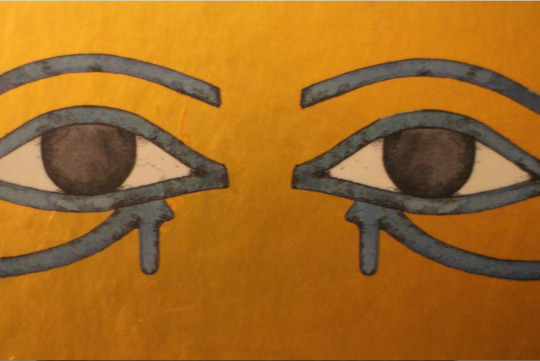
The eyes.....
#eyes#egyptian#antient#antient egypt#mystical#mystique#watching#watching you#dem eyes#history#hyroglyphics
5 notes
·
View notes